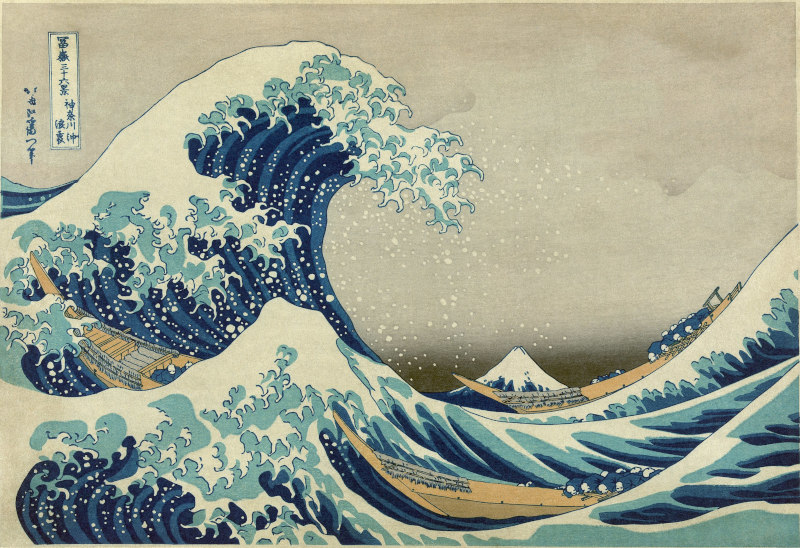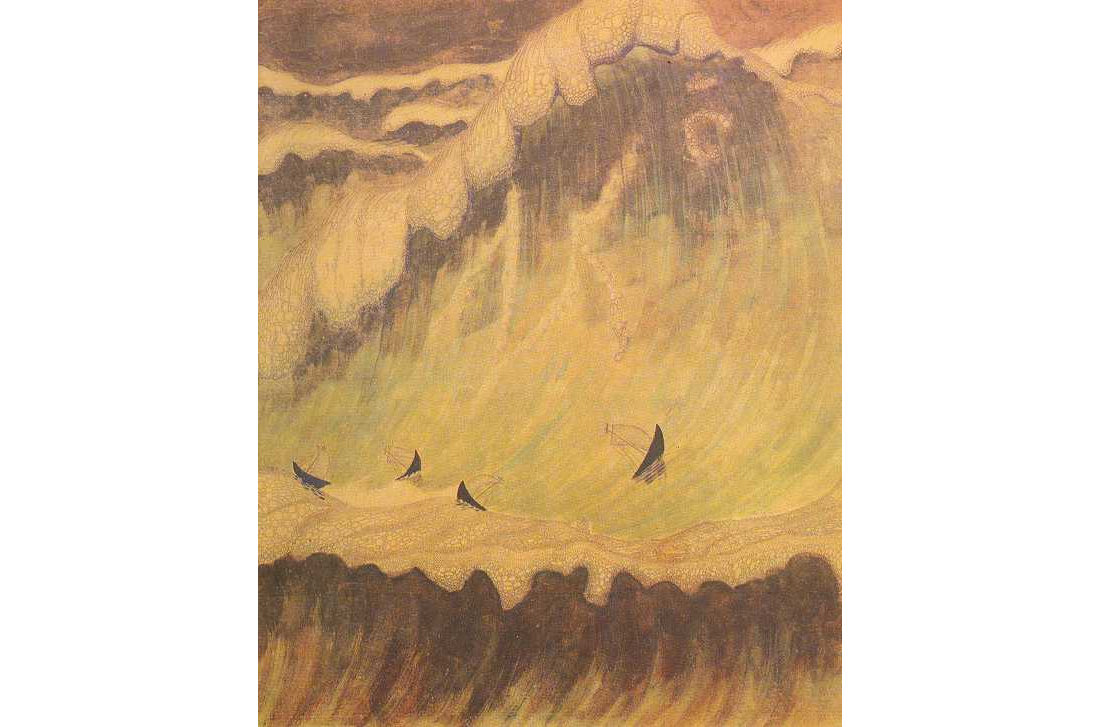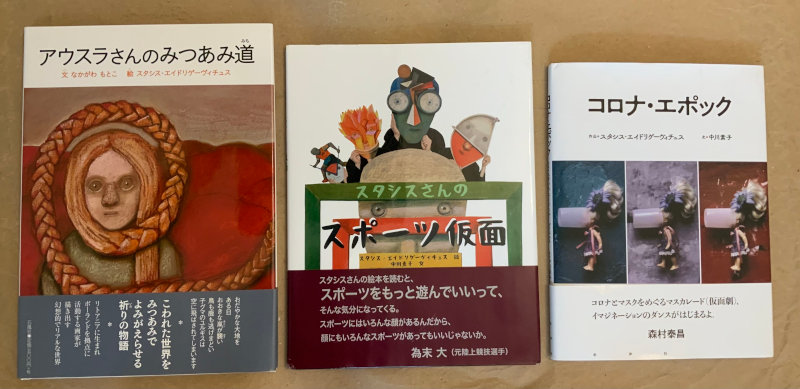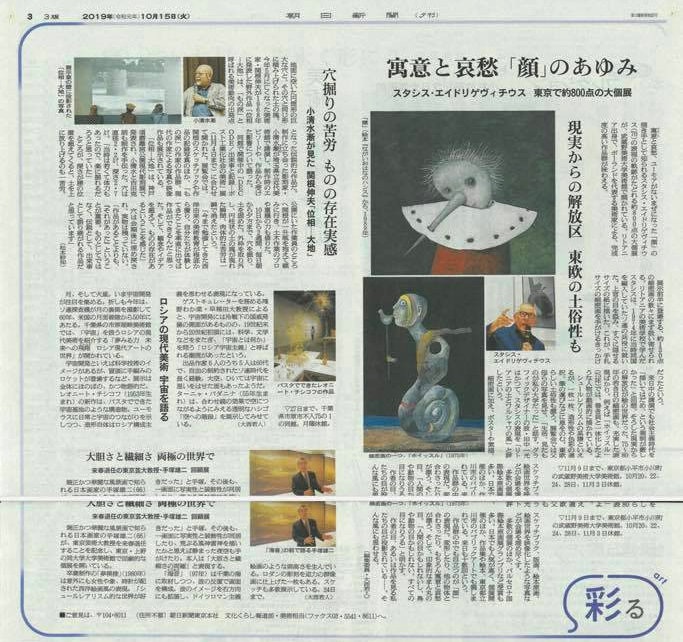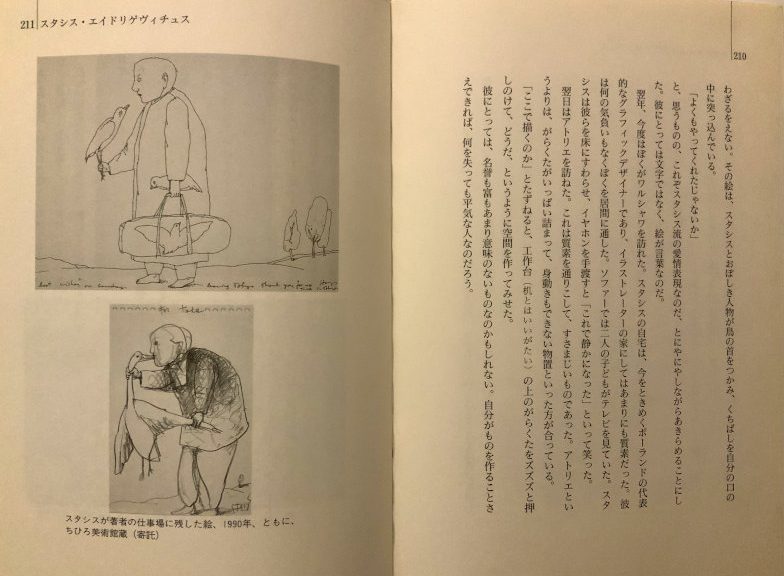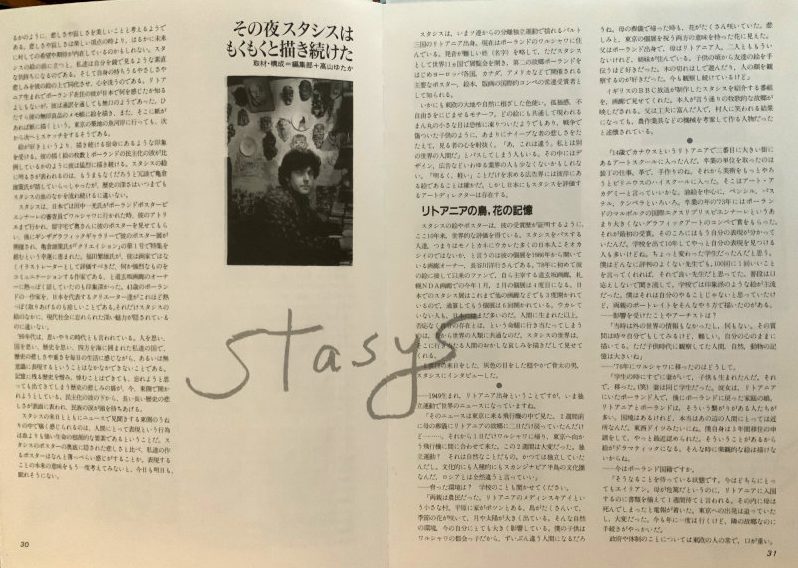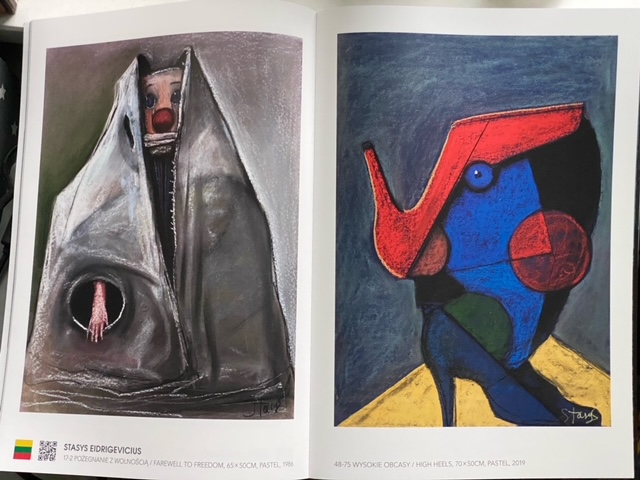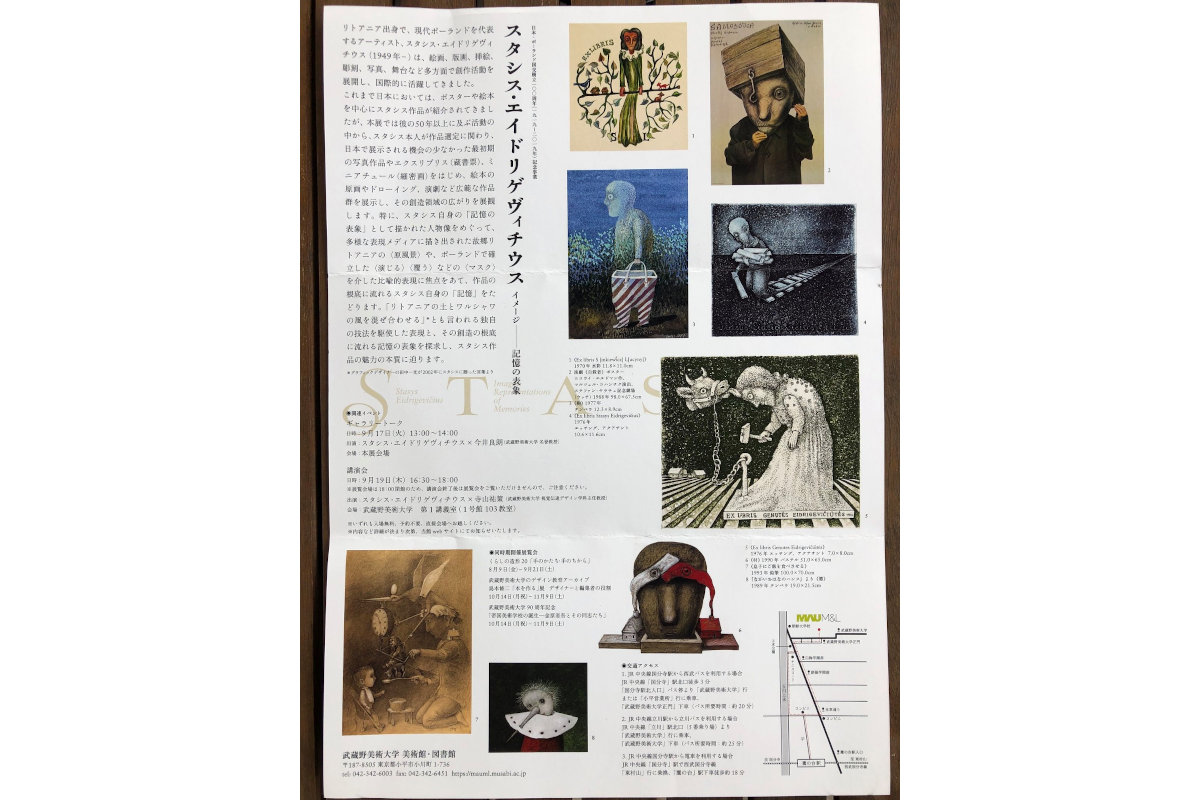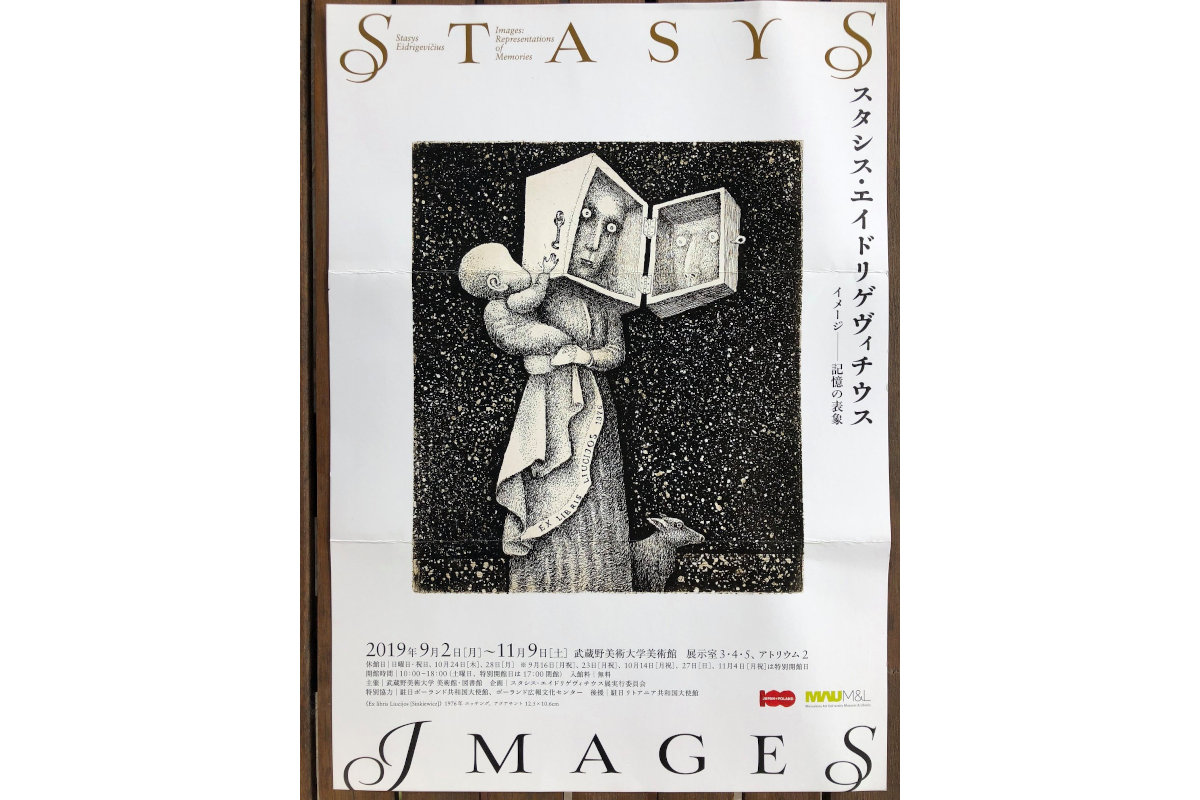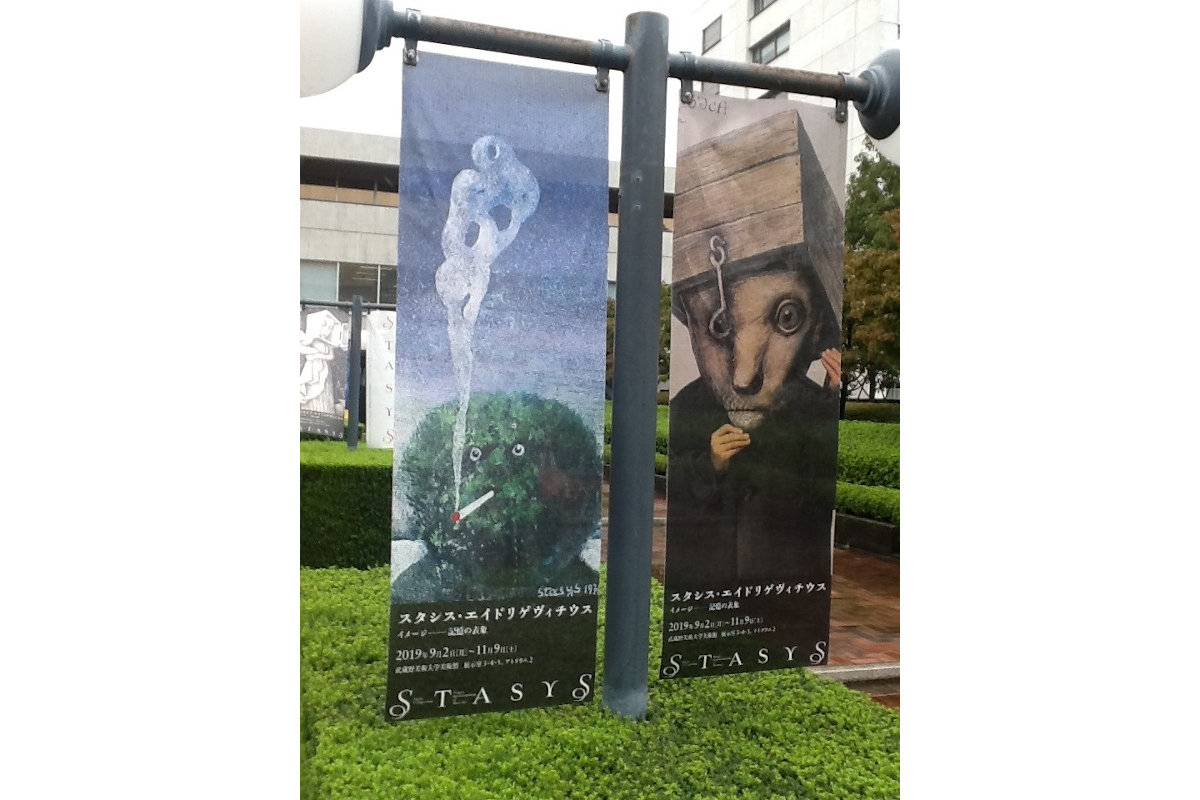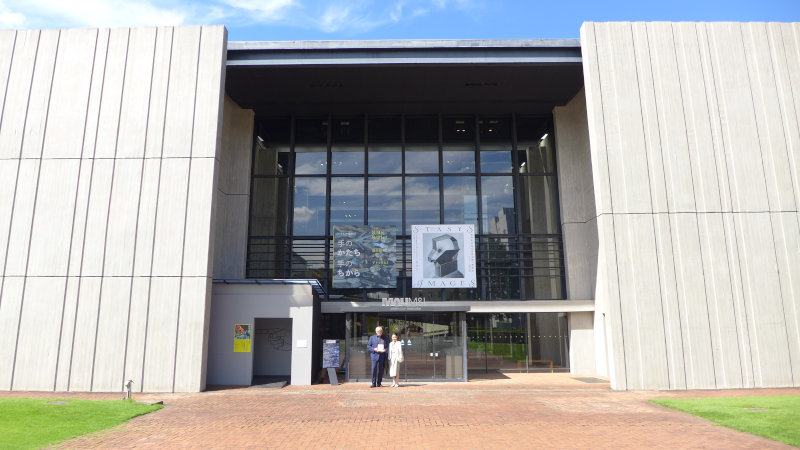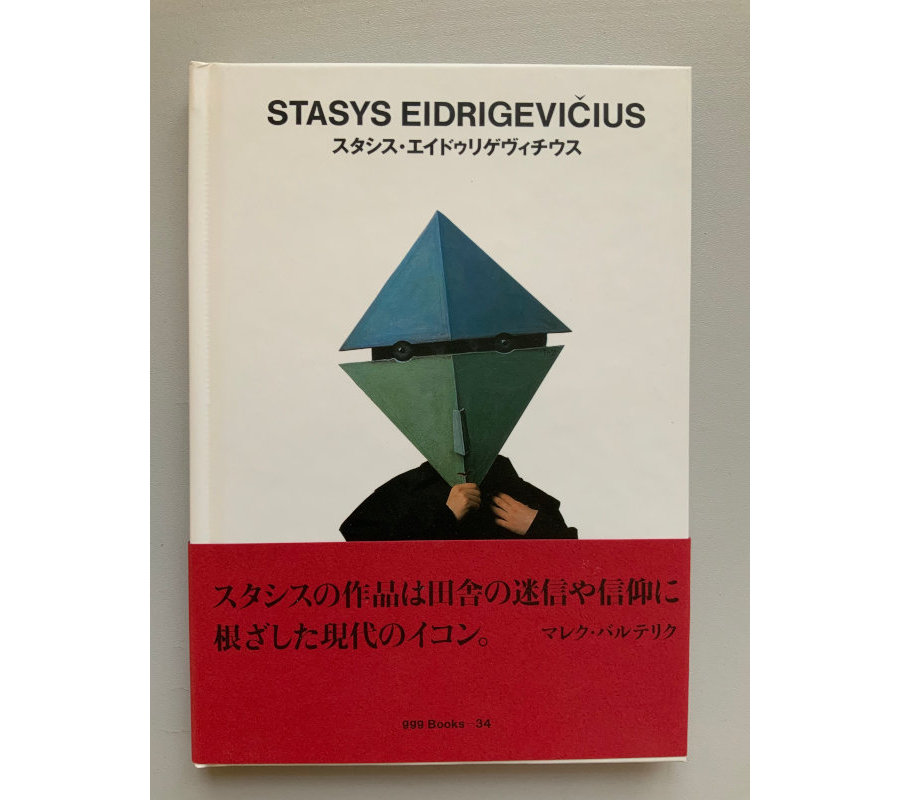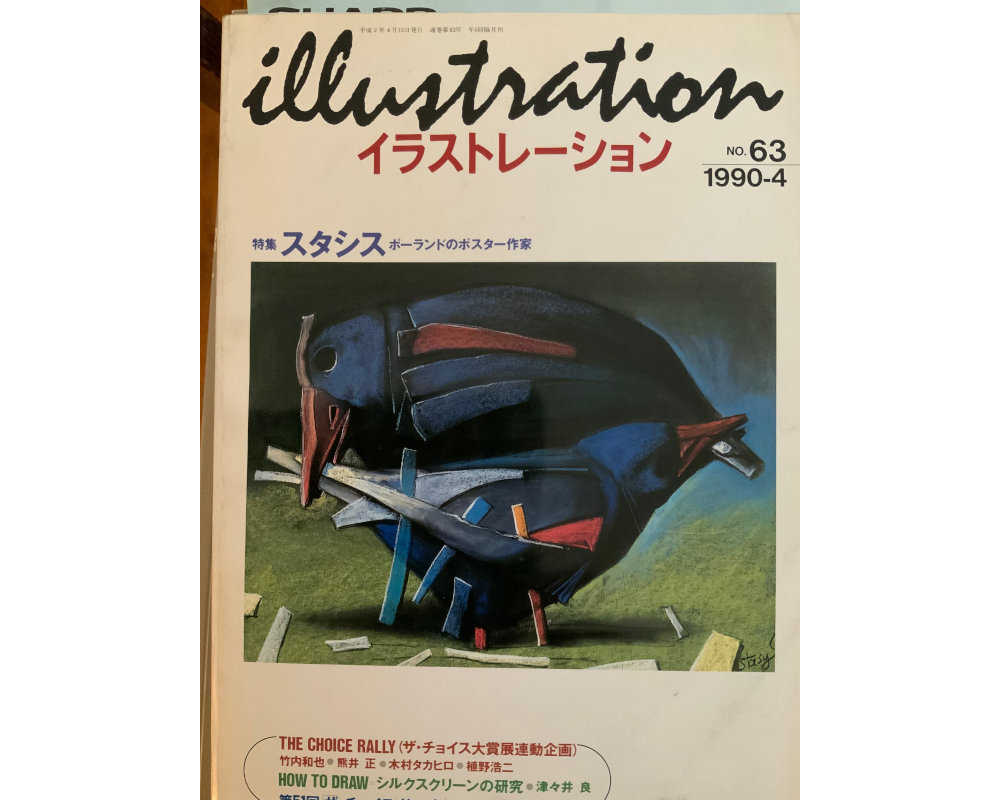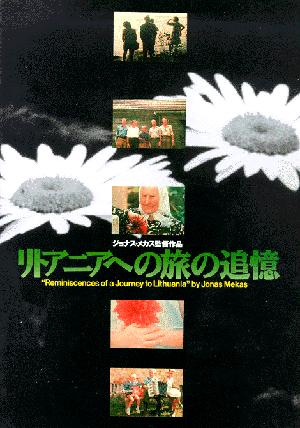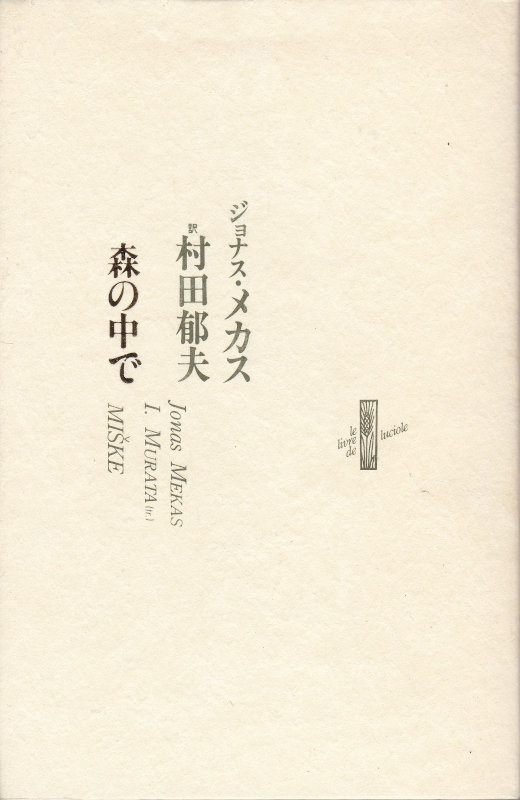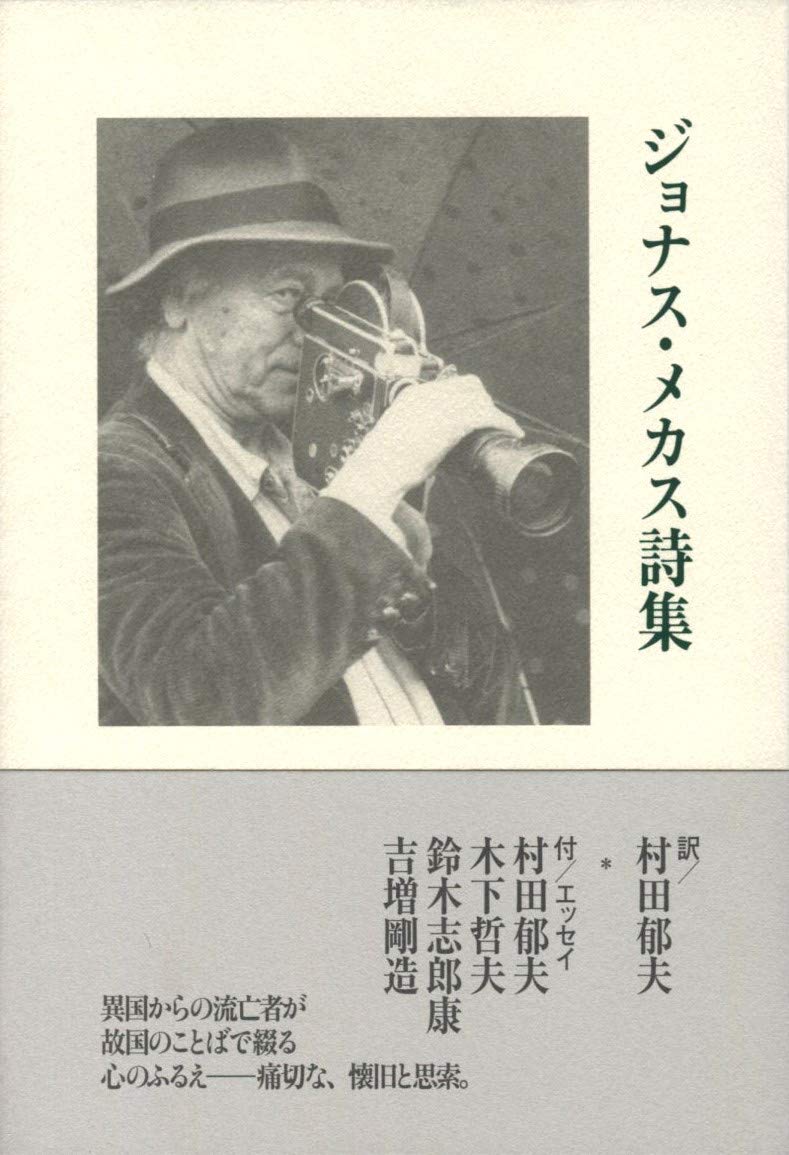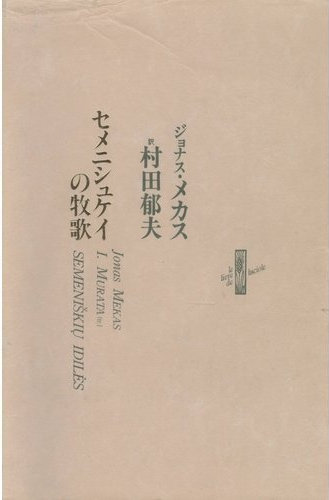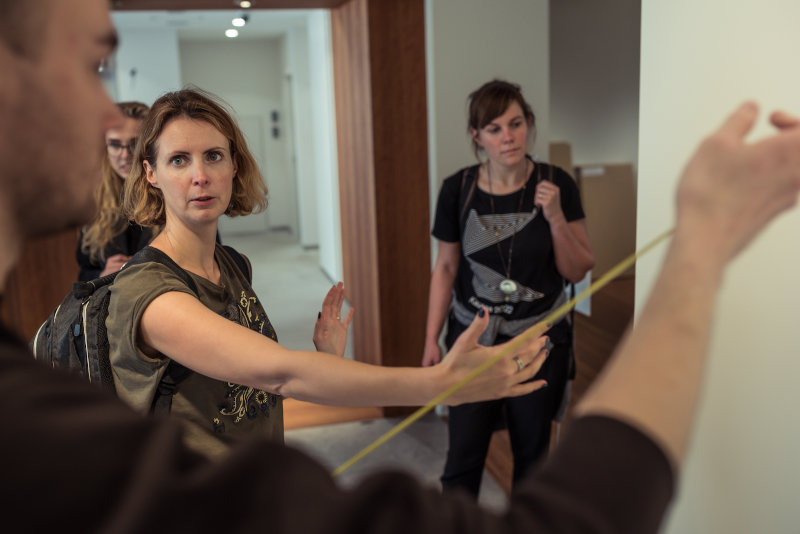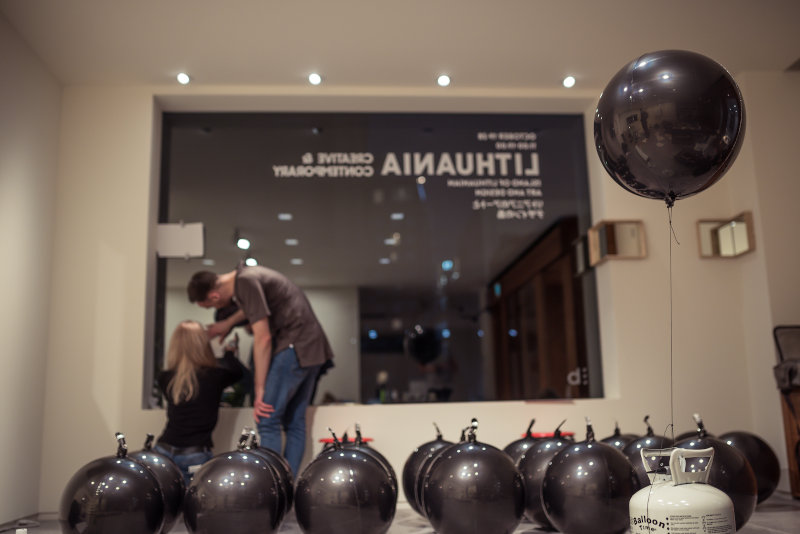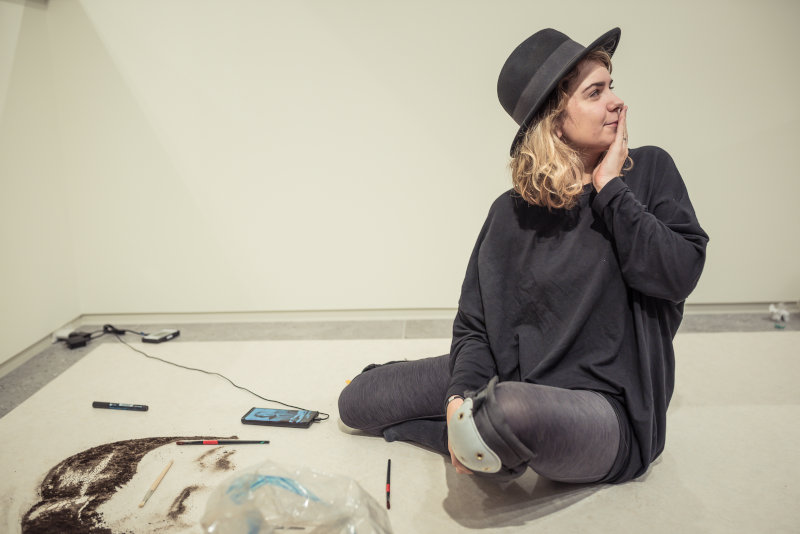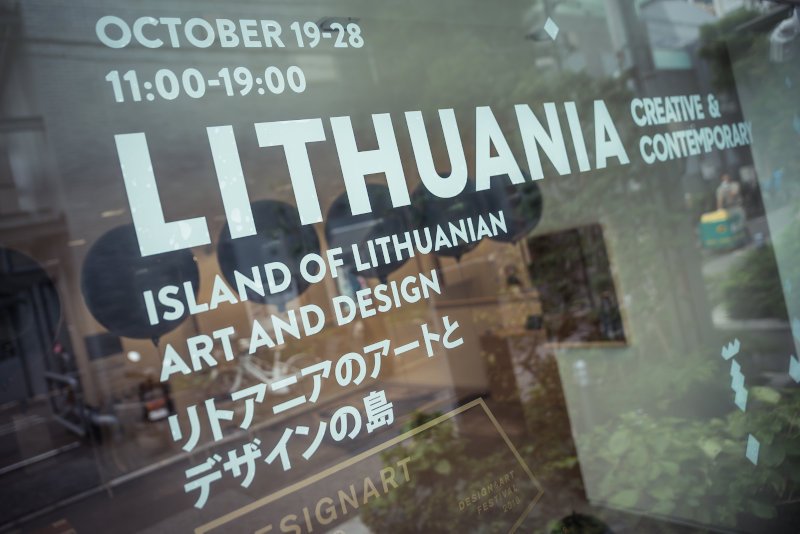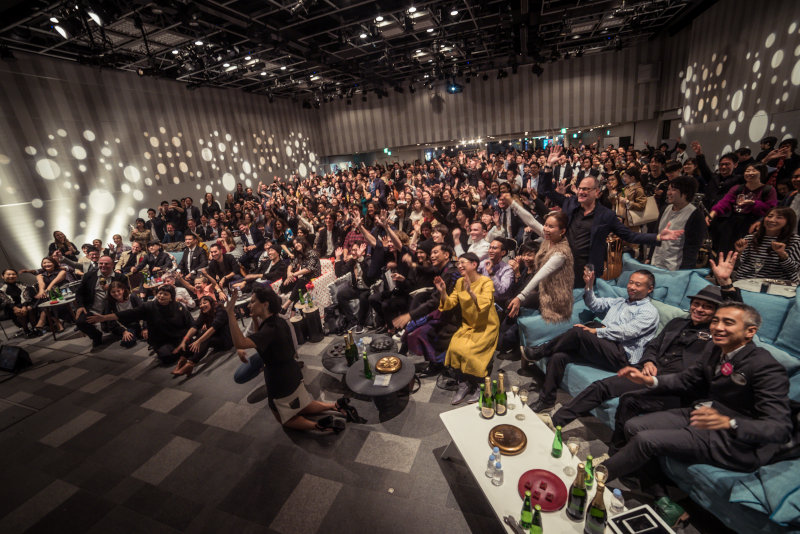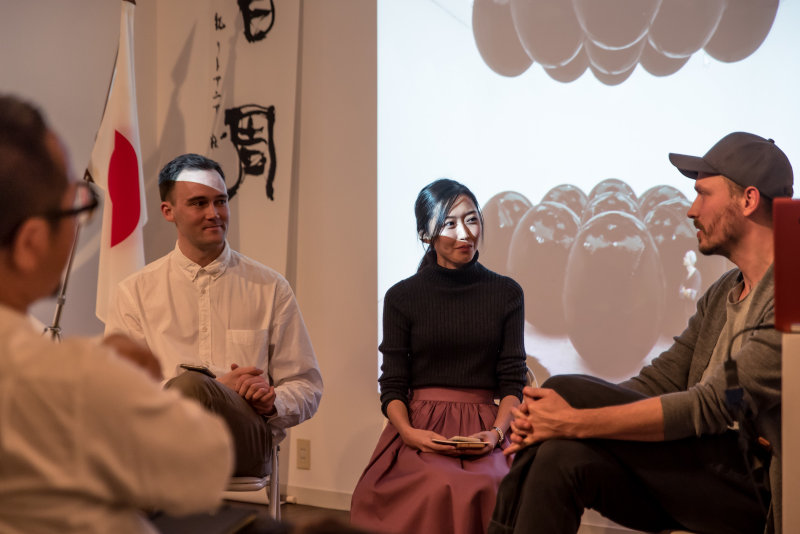Lithuanian art in Japan
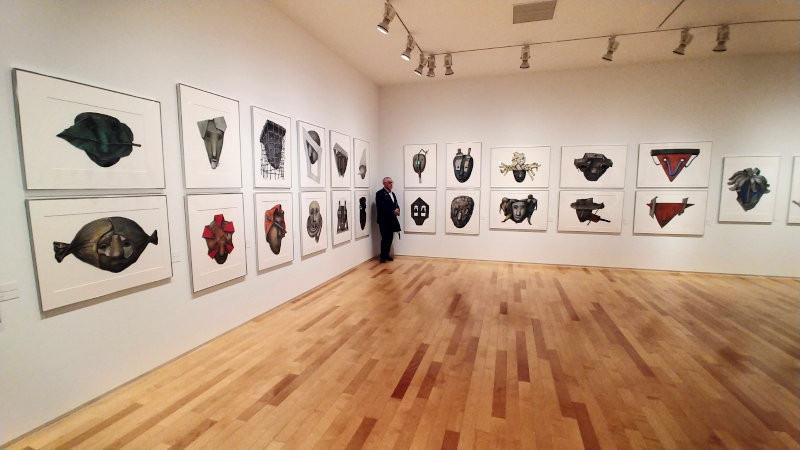
(exhibition of S. Eidrigevičius in Tokyo, 2019; S. Eidrigevičius personal archive)
Collections of Japanese art have been accumulated and exhibited in Lithuania for more than a hundred years. Although Lithuanian art in Japan has a shorter history, it gained increasingly more attention and presence in the recent decades. Knowledge about Lithuanian art in Japan is mainly linked to three names, i.e. M. K. Čiurlionis, Fluxus movement, and S. Eidrigevičius. These names are rather popular among Japanese intellectuals. However, in recent decades more and more opportunities are occurring for other Lithuanian artists, sculptors, and designers to represent themselves as ambassadors of Lithuanian culture.
M. K. Čiurlionis (1875-1911)
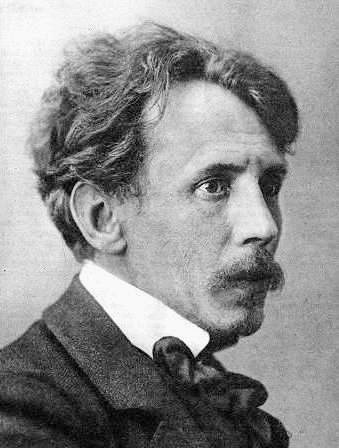
M. K. Čiurlionis is the most famous Lithuanian painter and composer. His personality is probably the most significant cultural bridge linking the two countries. Čiurlionis created at the beginning of the 20th century, and his works were inevitably influenced by Japonisme, which was very popular in Western Europe at that time. He learned from Japan in this way. At the end of the 20th century, the Japanese people discovered Čiurlionis and became fascinated by his works. Thus, Čiurlionis became the major artist representing Lithuanian culture. Firstly, the Japanese recognized him as a composer and later as a painter.
During the lifetime of Čiurlionis, the whole of Europe followed the trend of Japonisme popularized by ukiyo-e woodblock prints. European painters, impressionists, expressionists, symbolists, and representatives of other styles of that time admired Japanese art. It inspired them, and sometimes they even imitated the works of the Japanese painters. In Warsaw, M. K. Čiurlionis had an opportunity to see the exhibition of woodblock prints and get acquainted with Japanese art. It is quite possible that he consciously or unconsciously used the motives of Japanese art in his paintings.
(Jūros sonata. Finale, 1908; M.K.Ciurlionis Painting Gallery / Vilnius Lyceum / Osvaldas Grigas; The Great Wave off Kanagawa, K. Hokusai, c. 1830)
M. K. Čiurlionis was recognized as a composer in Japan during the Soviet era. It was an achievement firstly of Ichiro Kato. His interest arose after he got music records of Čiurlionis‘s symphonic poems. He worked in Chinbosha Publishing House and edited the World Encyclopedia of Music. In 1972, he included a detailed biography of M. K. Čiurlionis and an overview of his works. I. Kato encouraged the interest of his colleagues in music and Lithuania, and eventually a group of enthusiasts organized a kind of a fan club of M. K. Čiurlionis. This club organized exhibitions of reproductions and musical concerts in Japan.
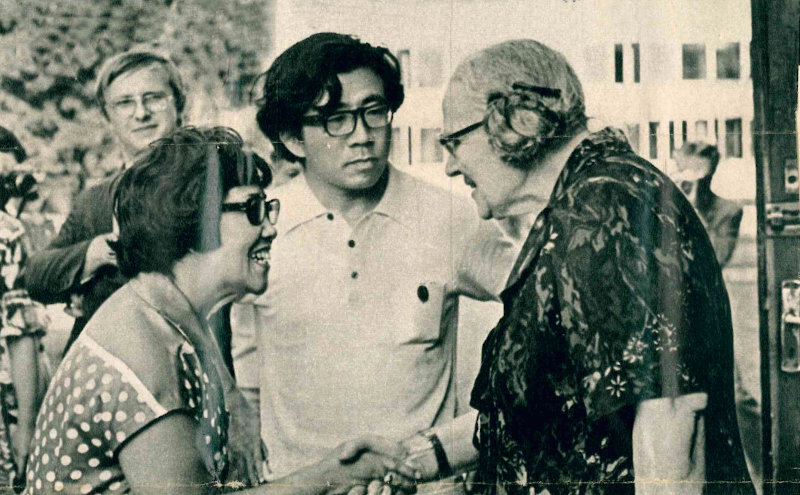
(I. Kato meeting with J. Čiurlionytė; "Švyturys"; R. Neimantas collection)
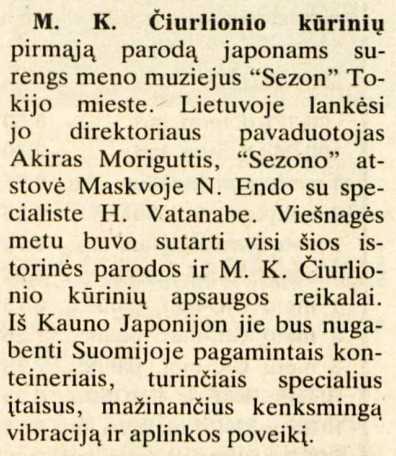
The club of friends of Čiurlionis organized exhibitions of reproductions during the Soviet era. In 1992, the first and so far the only exhibition of his original paintings was arranged in the Saison Museum of Art in Tokyo. Representatives of the imperial family also attended this exhibition. It was the first time such a large exhibition of Čiurlionis works was organized abroad. The Japanese lovers of art were very interested in the exhibition and attended lectures about Čiurlionis to learn more. Also, exhibitions of reproductions were organized. Empress Michiko is personally interested in Čiurlionis, and several Japanese art magazines published articles about this Lithuanian artist.
(article about M. K. Čiurlionis exhibition; "Tėviškės žiburiai", 10 March 1992)
Stasys Eidrigevičius
Stasys Eidrigevičius is one of the most significant Lithuanian artists who is also popular in Japan. He cooperated with the Japanese artist Hiroko Mori for a long time. In 1993, the small private Hiroko Mori and Stasys Museum was established in Otaru city (Hokkaido). After Mori's death in 2017, the museum suspended its activities. However, in April 2021, the museum was renovated on the initiative of the nephew of H. Mori and reopened to visitors.
Works of S. Eidrigevičius are also introduced to Japan via books. Motoko Nakagawa published two of them presenting this artist in 2015, 2018, and 2021.
(ticket to exhibition in Shibuya Seibu Gallery, 1991; S. Eidrigevičius personal archive)
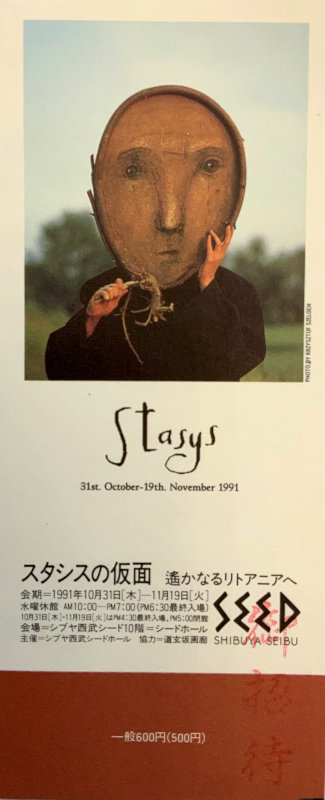
(moments from exhibitions as well as articles and books about S. Eidrigevičius from his personal archive)
Fluxus
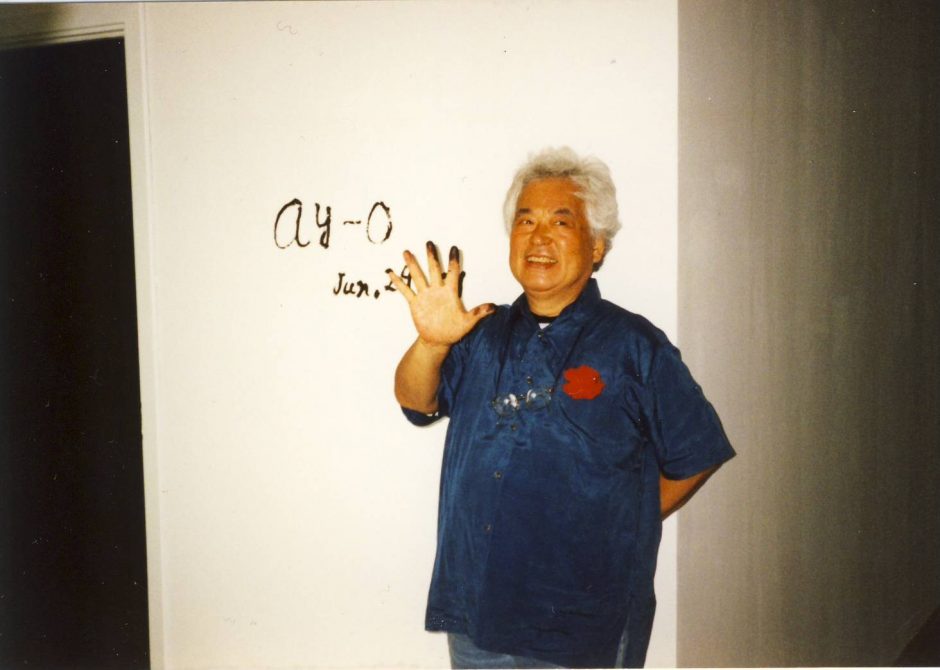
The international art movement Fluxus was established in the 1960s and united ideas of Western and Eastern art. One of its founders was Lithuanian emigrant George Mačiūnas who gave the name to the movement. Another well known member was Jonas Mekas. Fluxus and its participants are pretty popular in Japan, and this movement became a bridge of art between Japan and Lithuania. One of the first exhibitions in Japan was arranged in 1995 in the private art museum “Watari-um”. In August 2021, the exhibition was organized on the occasion of the 90th anniversary of G. Mačiūnas.
(AY-O next to "Black Hole" in Kaunas Paintings Gallery, 2001)
Fluxus inspires the Japanese artists to get acquainted with the homeland of George Mačiūnas and Jonas Mekas. More than one visited Lithuania. Famous Japanese artist Takao Iijima (AY-O) inspired by the art of Fluxus gave his installation “The Black Hole” (Lit. “Juodoji skylė”) to the Kaunas Picture Gallery in 2001. In 2002, Takako Saito arranged an exhibition inspired by Fluxus in the same place.
Jonas Mekas
Famous artist Jonas Mekas (1922-2019) visited Japan more than once and held lectures there. In his honor, the Japanese established the fellowship of Japanese diary films by Jonas Mekas. He is probably the most popular Lithuanian author, whose works are translated into the Japanese language. That includes his poetry collections “In Forest”, “Idylls of Semeniskiai” (Lit. “Semeniškių idilės”), and “Letters from Nowhere”, diary “The Rise of a New American Cinema 1959-1971”, books of memories and collections of notes.
(interview with J. Mekas in New York, 2014)
Other artists and projects
The exhibition of Čiurlionis' art was arranged in 1992 in Tokyo. Other Lithuanian artists gained an opportunity to represent themselves in 1994 in the exhibition of Lithuanian graphics organized in the Space Yui Gallery in Tokyo. The artists have been organizing personal and collective exhibitions since then. However, Lithuanian visual art become recognizable due to original projects, for example, Nishiaizu International Art Village and the Sapporo Snow Festival.
(A. Sakalauskas producing wooden sculpture "Gabija" in Inami, 1999; photo by K. Kagi)
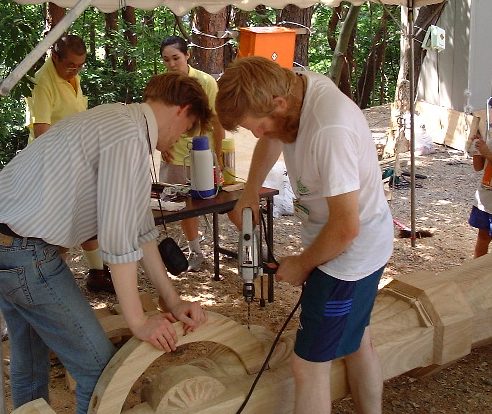
Nishiaizu International Art Village
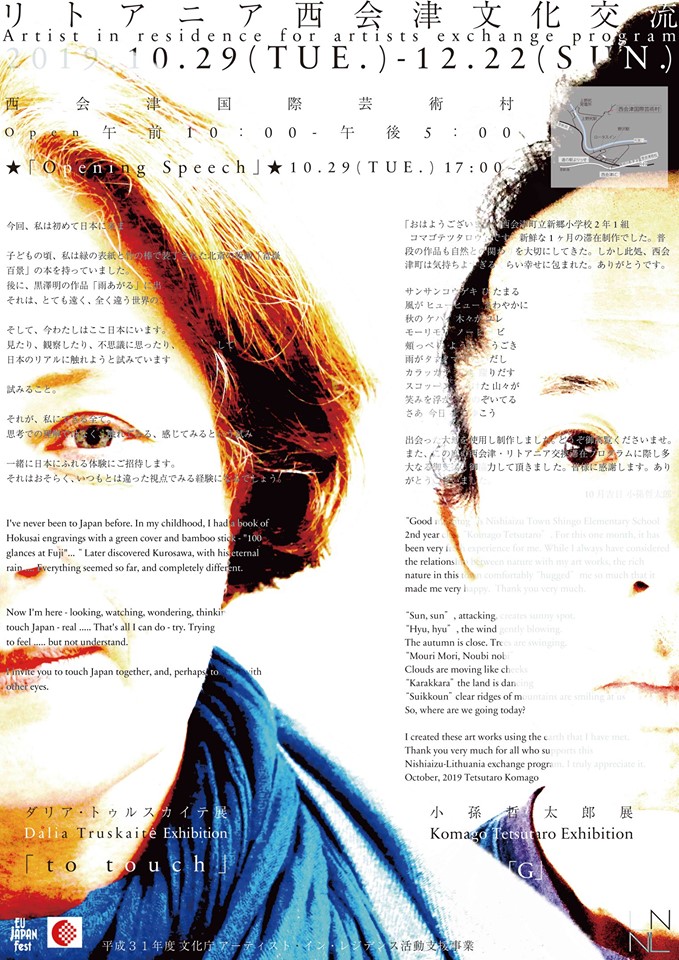
Nishiaizu is a small mountain town located in Fukushima Prefecture. In 2004, the community of the shrinking town decided to reopen the recently closed school and make it a residence for artists. The school became a place attracting artists from Japan and other countries and encouraging projects of mutual creation. The first artists, who lived here in 2005 and 2006, were Lithuanians, including sculptor Kęstutis Lanauskas, painter Eglė Mitikevičiūtė, etc. People have fallen in love with Lithuania, and, subsequently started organizing events to represent Lithuanian culture. Also, many exhibitions of Lithuanian artists were arranged. Works of stained glass, amber, pottery, straw roofs, paintings, and sculptures were represented in these exhibitions. Additionally, workshops and lectures were organized.
(poster of Nishiaizu project; Anykščiai Art Incubator archive)
Lithuanian sculptures in Japan
Examples of Lithuanian sculptures can be found in several places in Japan. For instance, a copy of the sculpture “The First Swallows” (lit. “Pirmosios kregždės”), author Juozas Mikėnas, is in the Hakone Open Air Museum. The example of wood carving “Gabija” by Algimantas Sakalauskas is exhibited in Inami town (Toyama Prefecture).
A team of Lithuanian sculptors had participated in the world-famous Sapporo Snow Festival for several years. During this festival, artists from all over the world compete while making snow sculptures. In 2011, Lithuanian artists Kęstutis Lanauskas, Artūras Burneika, and Tomas Petreikis created beehives and bees from snow. This sculpture was presented with the words “The world is our beehive. Let’s be responsible” and won first place.
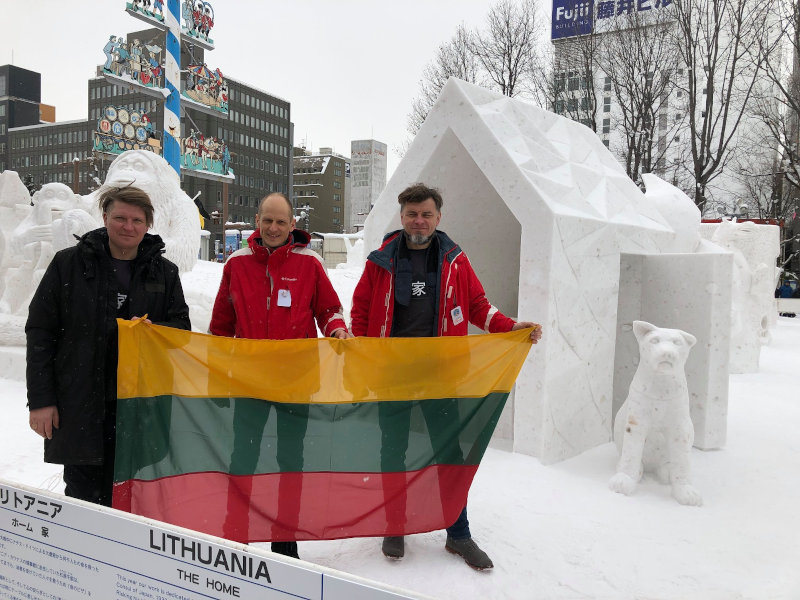
(sculptors next to a piece made out of snow, 2020; personal archive)
Lithuania: Creative & Contemporary
In October 2018, Lithuania participated in the largest design and art festival “DesignArt” in Tokyo for the first time. The mini-cycle of events “Lithuania: Creative & Contemporary” was arranged in the “Broadbean” gallery in the Roppongi district. The aim of this cycle is to represent Lithuania as a country of modern design. During these events, Jolita Vaitkutė created a portrait of Ch. Sugihara, Gerda Liudvinavičiūtė inspired by Tokyo metabolism represented a collection of jewelry, Tadas Černiauskas introduced the installation “Black Balloons”. Also, visitors of the exhibition got acquainted with Lithuanian cuisine in a contemporary manner – in Pink Soup Party the visitors learned about cold beetroot soup šaltibarščiai.
(moments from the festival, 2018; "Kūrybiniai ir Organizaciniai sprendimai" archive)
Bibliography
- Žukauskienė-Čepulionytė, Gabija. 2001. Dešimties metų Lietuvos ir Japonijos kultūros ryšių apžvalga. Mokslas ir gyvenimas, spalis.
- Nunokawa, Yumiko. 2017. Contextuality of the Artictic Language of M. K. Čiurlionis. Doctoral dissertation.
- Kaune – spalvingas japonų menininko instaliacijos „Juodoji skylė“ jubiliejus
- Delfi. 2005. Seną Japonijos mokyklą atgaivino lietuviai menininkai.
- 2021-04-10 森ヒロコ・スタシス美術館 4/11リニューアルオープン. Otaru-journal.com.

